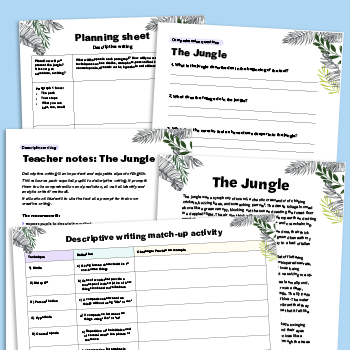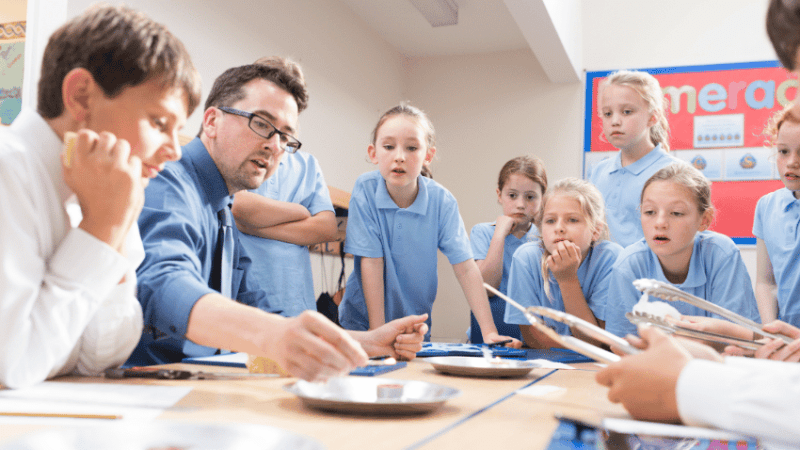School research visits – how to prepare and what to ask

Adam Riches looks at how to maximise the benefits and long-term impact of fact-finding visits to other schools

- by Adam Riches
- Teacher, writer and educational consultant

Among the many knock-on effects of the pandemic has been its forced limiting of valuable networking opportunities.
While there have been some huge benefits to working online and time savings from needing to travel less, what many of us have missed are face-to-face interactions with teachers working at other schools.
School visits can offer much to both experienced and early career teachers. Seeing how others do the same, or at least similar things to you can have a transformative impact on your practice. Seeing the application of approaches in different contexts often also allows teachers to critique their own teaching and students’ learning.
When done right, school visits can result in major gains – but how can we get the most out of them?
Pick the right place
Visiting other schools costs money and can involve complicated cover arrangements, so when the opportunity arises, it’s important that you pick the right school.
You may choose to visit a particular school because it’s renowned for its good results in certain subjects, or due to its reputation for reforming behaviour. Maybe its SEND provision is notably strong.
The obvious thing to do might be to focus on those settings with the best reputations, but it doesn’t always follow that they’re the best places to visit. Developing schools can be just as useful as more ‘polished’ schools. You can learn a great deal from examples of things done well, but also just as much from centres that approach areas differently to how you’d tackle them yourself.
Yes, having the chance to study model lessons or curriculums can be great – but more often than not, you’ll learn just as much from examining what isn’t being done.
Go with an aim in mind
Another big consideration is context. I work in an area of high social deprivation, but that’s not to say that visiting an independent school wouldn’t be a useful exercise.
I can’t reduce my class size to eight, and I might not be able to provide the kind of cultural experiences they can, but pedagogically, there’s still much I can glean about the teaching taking place there.
The real value of the exercise is to see how varying approaches can be applied within your context. It’s rare for a model to be directly translatable between contexts, however similar those schools may appear, since there are simply too many variables involved.
You aren’t going to carry out a school visit and promptly change the world upon returning to your own school. It can be motivating and inspiring to see how things are done differently, but we must accept that one visit is just the start.
Approach any school visit with a clear mission objective in mind. Simply turning up there in the hope of seeing something, anything, that will help you and your colleagues or students is a risky strategy, so consider what you want to get out of the visit.
This might sound obvious, but setting out your end goal at the start will help you stay laser focused on one, or several aspects of the school you’re visiting. We know how busy and chaotic schools can be; by heading there with some simple goals in mind, you can minimise the white noise and make sure you come away with something genuinely useful.
Trending
Be sure to liaise with staff before you go. You want to talk to the right people about the right things. If you’re going with a subject focus, narrow it down to a specific Key Stage and make sure that Key Stage is being taught when you’re there. Similarly, if you’re hoping to look at how a topic is being taught, make sure it’s actually timetabled. When it comes to behavioural approaches and other variable focuses, you can’t really account for whether you’ll see more or less of these in action, but you can still ensure that the staff there will be willing to immerse you into how the school addresses those areas.
Go with realistic expectations
School visits are brilliant for helping you to build and reflect on what you do in your school, but can also be great opportunities for establishing wider collaborative networks with others outside of your immediate bubble.
However, while they can be highly effective motivators and catalysts for overcoming acute and persistent issues in your own context, the visit itself won’t necessarily solve the issue. In all likelihood, you’ll need to spend some time reflecting on, and then putting into action what you’ve seen, in a way that actually enables some sort of impact to be had.
Yes, there may be some techniques and strategies you can start using straight away – but go in with a set of realistic expectations. View any visits to other schools not as solutions in themselves, but as a part of a map pointing to where the solution you’re seeking might lie.
Don’t be an observer
To make your visit truly worthwhile, be proactive. Talk to staff, talk to students, ask questions, look at students’ work, books and data. Take it all in.
This can be overwhelming, but you need to get a feel for the approaches, styles and most importantly, impact of the teaching and learning you encounter during the visit in order to accurately judge if, how and when you might be able to apply similar (or indeed different) things yourself.
Simply listening to a curriculum lead drone on about how they structure their topics might seem helpful on the surface, but in reality, actually seeing how that curriculum is delivered, and has been delivered, will be much more valuable.
Interacting with students can also be massively helpful. Canvassing their views and opinions will give you a useful way of examining alternative approaches through an informative lens. Of course, I happen to think that the way my department teaches English is the best way, because that’s how I’ve instructed them to do it – but do the kids that I teach share that view? Ask them!
Whether you’re able to gain genuine insight into how well things are working, and crucially, how those approaches might be improved upon within your school, will rest on the quality of your interactions during the visit. Simply jotting everything down into a notebook isn’t going to be as helpful as actively getting involved.
Keep it going
A one-off visit is helpful. Ongoing communication and two-way dialogues between schools more so. Regular structured peer support is better still.
Taking the time to visit other schools can do much to help both parties realise the value that comes from centres working together, so after your visit, keep those communication channels open. Invite teachers back to your school, and make the most of this newly opened dialogue around teaching. Some of the biggest improvements made within departments, across whole schools and even trusts will often start with a school visit that later turns out to be a genuine game-changer.
Adam Riches is a senior leader for teaching and learning and author of the book Teach Smarter: Efficient and Effective Strategies for Early Career Teachers (£16.99, Routledge); follow him at @teachmrriches







